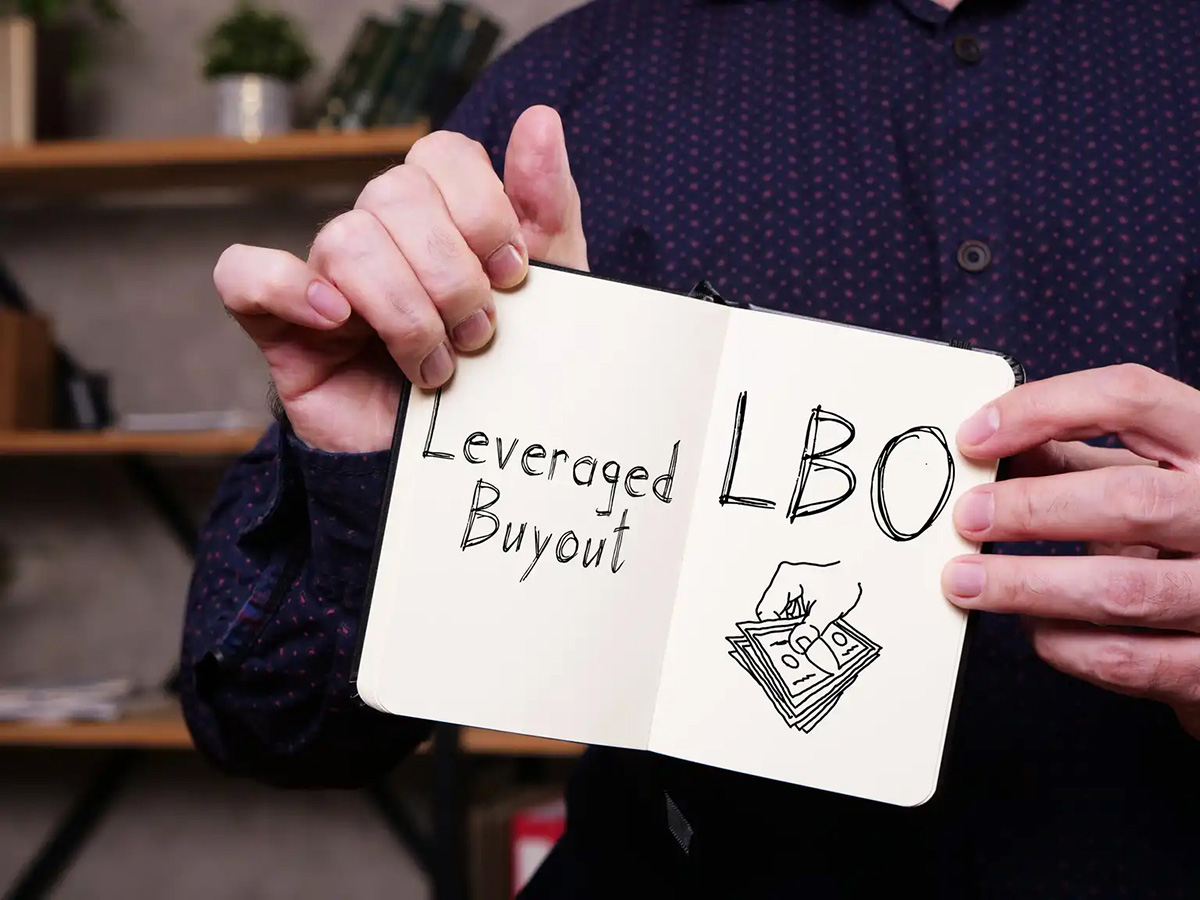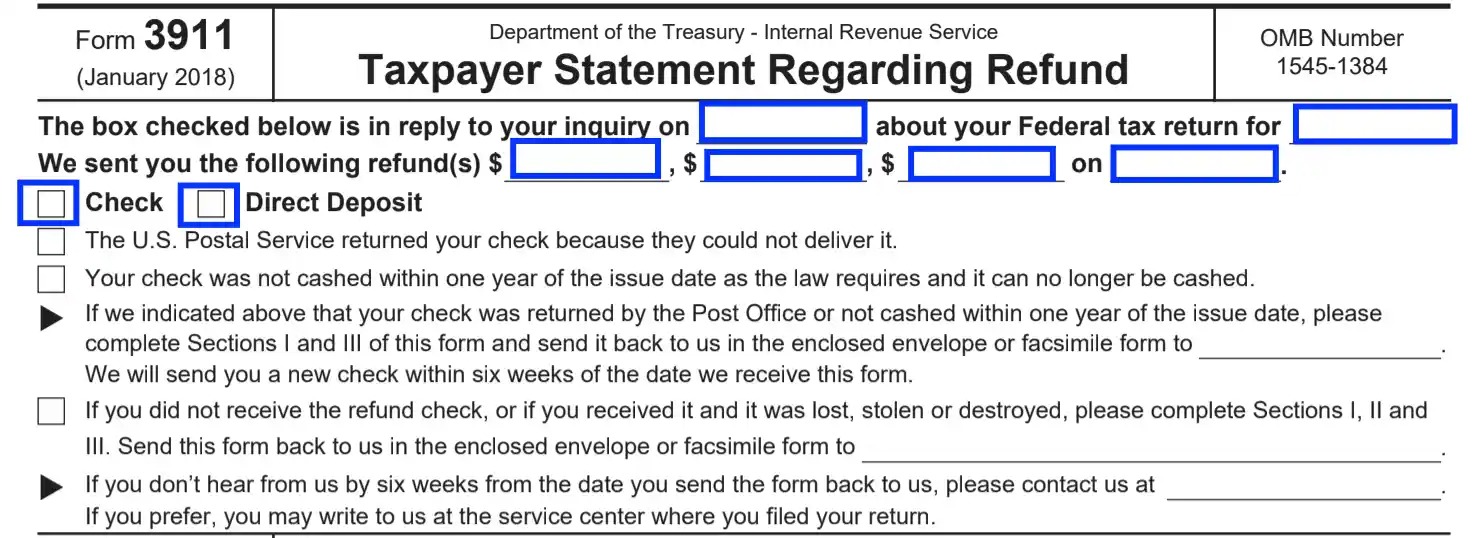

Finance
How Employee Buyouts Work
Modified: December 30, 2023
Learn about how employee buyouts work and the financial implications involved. Gain insight into the intricacies of finance in this informative guide.
(Many of the links in this article redirect to a specific reviewed product. Your purchase of these products through affiliate links helps to generate commission for LiveWell, at no extra cost. Learn more)
Table of Contents
Introduction
An employee buyout is a unique and exciting opportunity for employees to take control of a company by acquiring a majority share ownership. This alternative ownership structure allows employees to become shareholders and actively participate in the management and decision-making processes of the business they work for.
While employee buyouts are more commonly associated with small and medium-sized enterprises (SMEs), they can also occur in larger corporations. This article will explore the concept of employee buyouts, including the benefits, key steps involved, financing options, legal considerations, and potential challenges.
Employee buyouts can be an attractive option for several reasons. Firstly, they enable employees to have a greater say in the direction and operations of the company. By becoming owners, they have the ability to shape the corporate culture, set strategic goals, and align the business with their values.
Furthermore, employee buyouts can lead to increased commitment and motivation among employees. As owners, they have a vested interest in the success of the company and are more likely to go the extra mile to ensure its profitability and long-term sustainability. This increased dedication can result in higher productivity, improved customer satisfaction, and overall business growth.
From a financial perspective, employee buyouts can provide significant benefits. For example, employees may have the opportunity to earn higher returns on their investment if the company performs well. Additionally, they may receive tax advantages and other incentives that are not available to regular employees.
Employers also stand to gain from employee buyouts. The transition to an employee-owned structure can improve the company’s reputation among customers, suppliers, and the local community. It may also attract and retain top talent, as employees perceive the buyout as a sign of stability and long-term job security.
In the following sections, we will delve into the specifics of how employee buyouts work, the steps involved in the process, the financing options available, and the legal and regulatory considerations that must be taken into account. We will also explore the potential challenges and risks associated with employee buyouts, as well as examine real-world case studies of successful employee buyouts.
What is an Employee Buyout?
An employee buyout (EBO) is a transaction in which employees acquire a majority stake or full ownership of the company they work for. It involves the transfer of company shares from the existing owner(s) to the employees, either directly or through an employee trust.
The process of an employee buyout typically begins with an internal evaluation and assessment of the feasibility and desirability of employee ownership. The employees, often with the support of an employee buyout specialist or consultant, then negotiate with the current owner(s) to reach a mutually agreeable deal.
Employee buyouts can take various forms, depending on the structure of the business and the specific objectives of the employees. The most common types of employee buyouts include:
- Management Buyout (MBO): In this scenario, a group of managers within the company pools their resources to acquire ownership. MBOs are often facilitated by external financing, such as bank loans or private equity investments.
- Employee Stock Ownership Plan (ESOP): In an ESOP, a trust is established to hold shares on behalf of the employees. The company contributes to the trust, and employee ownership is distributed based on factors such as length of service or compensation level. ESOPs provide employees with a retirement savings plan.
- Cooperative Buyout: In a cooperative buyout, employees form a worker cooperative and collectively own and manage the company. This democratic ownership structure allows all employees to have a voice in decision-making processes.
Employee buyouts can occur for a variety of reasons. In some cases, the existing owner(s) may be looking to retire or exit the business and see employee ownership as a favorable succession plan. Other times, employees may initiate the buyout to regain control over their workplace or prevent a potential closure or restructuring that could result in job losses.
Employee buyouts have gained recognition as a viable business succession strategy and as a means to promote greater employee engagement and satisfaction. They foster a sense of ownership and empowerment among employees, as they have a direct stake in the company’s success and future direction.
Furthermore, employee buyouts often prioritize the preservation of jobs and community benefits over short-term profits. This can be particularly relevant in industries that are vulnerable to outsourcing or downsizing, as employee-owned companies tend to be more resilient and focused on long-term stability.
In the next sections, we will explore the numerous benefits of employee buyouts for both employees and employers, and delve into the key steps involved in the process of executing an employee buyout.
Benefits of Employee Buyouts
Employee buyouts offer a range of benefits for both employees and employers. Let’s examine some of the key advantages:
1. Enhanced Employee Engagement and Motivation
Employee buyouts create a sense of ownership and pride among employees. By becoming shareholders, they have a vested interest in the success of the company, leading to increased commitment and motivation. This higher level of engagement often translates into improved productivity and job satisfaction.
2. Retention of Local Jobs
Employee buyouts can help preserve jobs and support local communities. Rather than selling the business to external buyers who may relocate or downsize operations, an employee buyout ensures the continuity of jobs and economic stability in the area.
3. Alignment of Interests
Employee buyouts align the interests of the employees and the business. As owners, employees share a common goal of maximizing the company’s performance and profitability, ensuring a strong focus on long-term sustainability and growth.
4. Continuity and Stability
Employee buyouts can provide stability to a company during transitions or periods of uncertainty. Unlike external acquisitions, where new owners may introduce significant changes or even liquidate the company, employee buyouts often aim to maintain the existing structure, values, and culture of the business.
5. Improved Customer Relations
Customers often view employee-owned companies favorably. The dedication and commitment employees exhibit as owners can lead to stronger relationships with clients and enhanced customer loyalty.
6. Financial Rewards
Employee buyouts can offer financial rewards to employees over time. As the business grows, employees can benefit from increased share value or dividends. This can be particularly advantageous if the company is highly profitable.
7. Tax Advantages
In some jurisdictions, employee ownership arrangements can provide tax advantages for both the employees and the company. These incentives can include capital gains tax exemptions, tax-efficient mechanisms for transferring shares, and tax deductions on contributions to employee stock ownership plans.
8. Enhanced Company Image
An employee-owned business often enjoys a positive reputation in the market. Being recognized as an employee-owned company can boost the company’s brand image, attract socially conscious customers, and differentiate it from competitors.
These benefits demonstrate why employee buyouts have become a popular choice for companies looking to transition to employee ownership. The next section will outline the key steps involved in executing an employee buyout successfully.
Key Steps in an Employee Buyout
Executing a successful employee buyout requires careful planning and execution. Let’s explore the key steps involved in the process:
1. Feasibility Assessment
The first step is to assess the feasibility of the employee buyout. This involves evaluating the financial health and viability of the company, determining the level of employee interest and commitment, and identifying potential financing options. A thorough analysis of the business’s assets, liabilities, market position, and growth potential is essential to ensure the buyout is viable.
2. Building a Strong Employee Team
Creating a strong team of employee representatives is crucial for a successful buyout. This team will act as the driving force behind the transaction, coordinating communication, conducting negotiations, and ensuring the smooth transition of ownership. It is important to select individuals who have the necessary skills, knowledge, and dedication to navigate the complexities of the buyout process.
3. Negotiating with the Current Owner(s)
The next step is to negotiate the terms and conditions of the buyout with the current owner(s). This includes determining the valuation of the business, discussing the sale price, and establishing the timeline for the buyout process. The negotiations may also cover matters such as employee rights, governance structure, and employee involvement in decision-making processes.
4. Securing Financing
Financing the employee buyout is a critical step. This can involve a combination of internal financing, external loans, equity investments, or government grants. Exploring different financing options and working with financial institutions or investors experienced in employee buyouts can help secure the necessary funds and ensure favorable terms and conditions.
5. Drafting Legal Documents
Once the terms of the buyout have been agreed upon, legal documents, such as a share purchase agreement or a trust deed, need to be drafted. These documents outline the rights and responsibilities of the employees as shareholders, the ownership transfer mechanism, and any other relevant legal provisions. It is important to engage legal professionals experienced in employee buyouts to ensure compliance with applicable laws and regulations.
6. Communicating with Employees
Clear and transparent communication is essential throughout the buyout process. Employees should be informed about the progress of the buyout, the benefits and risks involved, and the expected impact on their roles and responsibilities. Regular updates and opportunities for employee input will help build trust and maintain employee engagement throughout the transition.
7. Implementing the Employee Buyout
Once all the necessary preparations are in place, the actual implementation of the buyout can take place. This may involve the transfer of shares, the establishment of an employee trust or cooperative, and the integration of new governance structures. It is crucial to ensure a smooth transition, providing appropriate training and support to employees as they take on their new roles as owners.
By following these key steps, companies can navigate the intricacies of an employee buyout and set themselves up for a successful transition to employee ownership.
Financing an Employee Buyout
Financing an employee buyout is a crucial aspect of the process, as it allows employees to acquire ownership of the company they work for. There are several financing options available, depending on the size of the buyout, the financial health of the business, and the resources available to the employees. Let’s explore some common financing methods:
1. Internal Financing
Internal financing involves using the cash flow, retained earnings, or assets of the company to fund the employee buyout. This can be achieved through gradual payments to the current owner(s) over a specified period or by allocating a portion of future profits towards the buyout.
2. Bank Loans
Obtaining loans from banks or other financial institutions is a common method of financing employee buyouts. The employees, as the new owners, can apply for loans based on the value of the business and its projected cash flows. The buyout structure and financial viability of the company will determine the loan eligibility and interest rates.
3. External Investors
Bringing in external investors, such as private equity firms or venture capitalists, can provide additional capital for an employee buyout. These investors typically exchange their investment for an equity stake in the company. However, it is important to consider the potential impact of external investors on employee control and decision-making processes.
4. Employee Stock Ownership Plans (ESOPs)
An Employee Stock Ownership Plan (ESOP) is a financing method that allows employees to gradually acquire ownership through contributions to a retirement savings plan. The company typically sets up a trust and contributes shares or cash to the plan on behalf of the employees. The ESOP purchases shares from the existing owner(s) and allocates them to individual employees over time.
5. Government Grants and Incentives
In some countries, there are government programs that provide grants, tax incentives, or subsidies to support employee buyouts. These programs are aimed at preserving jobs, promoting economic stability, and encouraging employee ownership. Researching and exploring available government schemes can provide valuable financial assistance for the buyout.
6. Seller Financing
Seller financing involves the current owner(s) providing financing to facilitate the buyout. This can take the form of a loan, where the employees pay off the purchase price over time to the seller. Seller financing can provide flexibility in terms of repayment and may be negotiated based on the company’s financial performance.
It is important to carefully consider the financial implications and risks associated with each financing option. Conducting a thorough valuation of the business, assessing cash flow projections, and working with financial advisors are essential steps in determining the most suitable financing method for the employee buyout.
In addition, resolving financing matters early in the buyout process will help create a solid foundation for the future success of the employee-owned company.
Legal and Regulatory Considerations
Executing an employee buyout involves navigating various legal and regulatory requirements. It is crucial to ensure compliance with applicable laws to protect the interests of both the employees and the business. Let’s explore some key legal and regulatory considerations:
1. Share Purchase Agreements
A share purchase agreement is a legally binding document that outlines the terms and conditions related to the sale and transfer of shares from the current owner(s) to the employees. It establishes the purchase price, warranties, rights and obligations of the parties involved, and any other relevant provisions. It is important to work with legal professionals experienced in mergers and acquisitions to draft and review these agreements.
2. Employee Share Ownership Schemes
Implementing an employee share ownership scheme, such as an Employee Stock Ownership Plan (ESOP) or a cooperative share ownership plan, requires compliance with legal requirements specific to these schemes. This may include regulatory filings, reporting obligations, and compliance with tax laws governing employee participation plans.
3. Employee Rights and Benefits
During an employee buyout, it is crucial to ensure that the rights and benefits of employees are protected. This includes communicating any changes to employment contracts, assessing pension plans and benefits, and complying with employment laws related to working conditions, remuneration, and employee participation.
4. Securities Law Compliance
If the employee buyout involves the issuance of new shares or the transfer of existing shares to employees, compliance with securities laws is essential. These laws regulate the offering, sale, and transfer of securities and aim to protect investors. Working with legal experts specializing in securities law will help ensure compliance with relevant regulations and filings.
5. Transfer of Intellectual Property and Contracts
When ownership of a company changes hands, it is essential to assess and address the legal aspects of transferring intellectual property rights and existing contracts. This may involve obtaining consent from third parties, renegotiating contracts, and ensuring the protection of proprietary information and trade secrets.
6. Corporate Governance and Directorship
With the transition to an employee-owned company, it is important to establish an appropriate corporate governance structure that reflects the new ownership dynamics. This may involve appointing employee representatives to the board of directors, establishing employee committees, and implementing decision-making processes that allow for employee participation.
This is not an exhaustive list of legal and regulatory considerations, and the specific requirements may vary depending on the jurisdiction and industry. Seeking legal advice from professionals experienced in employee buyouts is crucial to ensure compliance with all relevant laws and regulations.
By carefully navigating the legal and regulatory landscape, companies can mitigate risks and ensure a smooth transition to employee ownership.
Challenges and Risks of Employee Buyouts
While employee buyouts offer numerous benefits, they also present certain challenges and risks that need to be carefully managed. Let’s explore some of the common challenges and risks associated with employee buyouts:
1. Financing Constraints
Obtaining the necessary financing for an employee buyout can be challenging. Banks may be hesitant to provide loans, particularly if the business has limited collateral or a perceived higher risk profile. Accessing external capital from investors or securing government grants may also be competitive or restricted. Employees and management must carefully assess the financial feasibility of the buyout and explore appropriate financing options.
2. Lack of Expertise in Ownership and Management
While employees might excel in their individual roles, they may face challenges when transitioning into ownership and management positions. The skills required to run and grow a business are often different from those necessary to carry out specific tasks. Providing training and mentorship programs can help employees develop the necessary skills and knowledge to effectively manage the company.
3. Decision-Making and Consensus-Building
Transitioning to an employee-owned structure can lead to a shift in decision-making processes. Establishing a consensus-driven approach that values diverse perspectives while maintaining efficiency can be challenging. Employees must adapt to new decision-making models and work collectively to ensure effective governance and decision-making processes.
4. Employee Turnover and Retention
Employee buyouts may lead to uncertainty among employees, potentially resulting in increased turnover. Some employees may prefer the stability and direction provided by external ownership. To mitigate this risk, a clear communication strategy that highlights the benefits and long-term prospects of employee ownership is essential. Additionally, implementing retention programs and providing competitive compensation and benefits can help retain key talent.
5. Market Perception and Supplier Relationships
The transition to employee ownership may impact how the company is perceived by customers, suppliers, and partners. Some stakeholders might have concerns about the company’s stability, continuity, or ability to compete effectively. Building trust with stakeholders and demonstrating a clear business plan and commitment to customer service can help alleviate these concerns and maintain positive relationships.
6. Role Clarity and Transition
Determining new roles and responsibilities within the employee-owned structure can be a challenge. Employees may need to adapt to different roles, such as assuming leadership positions or taking on new responsibilities. Clear communication and training programs can aid in managing this transition and ensuring that employees are equipped to succeed in their new roles.
Addressing these challenges and risks requires careful planning, effective communication, and ongoing support for employees. By proactively managing these potential difficulties, companies can maximize the success of the employee buyout and realize the associated benefits.
Case Studies of Successful Employee Buyouts
Examining real-world examples of successful employee buyouts can provide valuable insights into the benefits and strategies that contribute to their success. Let’s explore two notable case studies:
1. The John Lewis Partnership
The John Lewis Partnership is a well-known example of a successful employee buyout. In 1929, John Spedan Lewis, the son of the founder of the John Lewis department store, transferred the ownership of the company to its employees. The company operates under a unique employee ownership model, where all eligible employees become partners in the business.
This employee-owned structure has allowed the John Lewis Partnership to foster a strong culture of collaboration, and employees have a significant say in the company’s strategy and decision-making processes. The company’s success can be attributed to its focus on excellent customer service, a commitment to high-quality products, and its unique profit-sharing scheme, where employees receive a share of the company’s profits.
Despite challenges in the retail sector, the John Lewis Partnership has consistently generated strong financial results and maintained a reputation for outstanding customer experiences. This case highlights the benefits of employee ownership in creating a customer-centric culture and aligning the interests of employees with the company’s long-term success.
2. Scott Bader Company Ltd.
The Scott Bader Company, a specialty chemicals manufacturer, is another notable example of a successful employee buyout. In the 1950s, Ernest Bader, the founder, transferred ownership of the company to a trust, which held the shares on behalf of the employees. This employee ownership structure, known as the Scott Bader Commonwealth, has been instrumental in the company’s long-term success and resilience.
The Scott Bader Company emphasizes employee engagement, with employees actively participating in decision-making processes and having a say in the company’s strategic direction. This culture of inclusivity and shared ownership has fostered strong employee commitment and innovation, leading to product development and market growth.
Under the employee ownership model, the Scott Bader Company has achieved long-term stability and sustained success. The company prioritizes ethical and sustainable practices, and its decentralization and employee empowerment have resulted in a highly motivated and engaged workforce. This case study demonstrates how employee ownership can create a competitive advantage and promote business resilience.
These case studies illustrate that employee buyouts can be successful when employees are actively engaged and empowered, and when shared values and a clear sense of ownership drive the business forward. By aligning the interests of employees, fostering a positive culture, and providing opportunities for employee participation, companies can create a sustainable and prosperous future under employee ownership.
Conclusion
Employee buyouts present a unique and compelling opportunity for employees to become owners and actively participate in the management and decision-making processes of the company they work for. This alternative ownership structure offers numerous advantages, including enhanced employee engagement, job retention, alignment of interests, and financial rewards.
While employee buyouts come with their own set of challenges and risks, careful planning, effective communication, and support for employees can help mitigate these potential difficulties. Key steps in the buyout process include conducting feasibility assessments, building a strong employee team, negotiating with current owners, securing financing, and addressing legal and regulatory considerations.
Case studies of successful employee buyouts, such as the John Lewis Partnership and the Scott Bader Company, demonstrate the transformative power of employee ownership. These companies have not only achieved financial success but have also fostered strong employee commitment, innovation, and customer-centric cultures.
In conclusion, employee buyouts can be a powerful strategy for businesses to foster employee engagement, retain jobs, and build a sustainable future. By embracing employee ownership, companies can unleash the full potential of their workforce, drive business growth, and create a positive impact on employees, customers, and communities.














